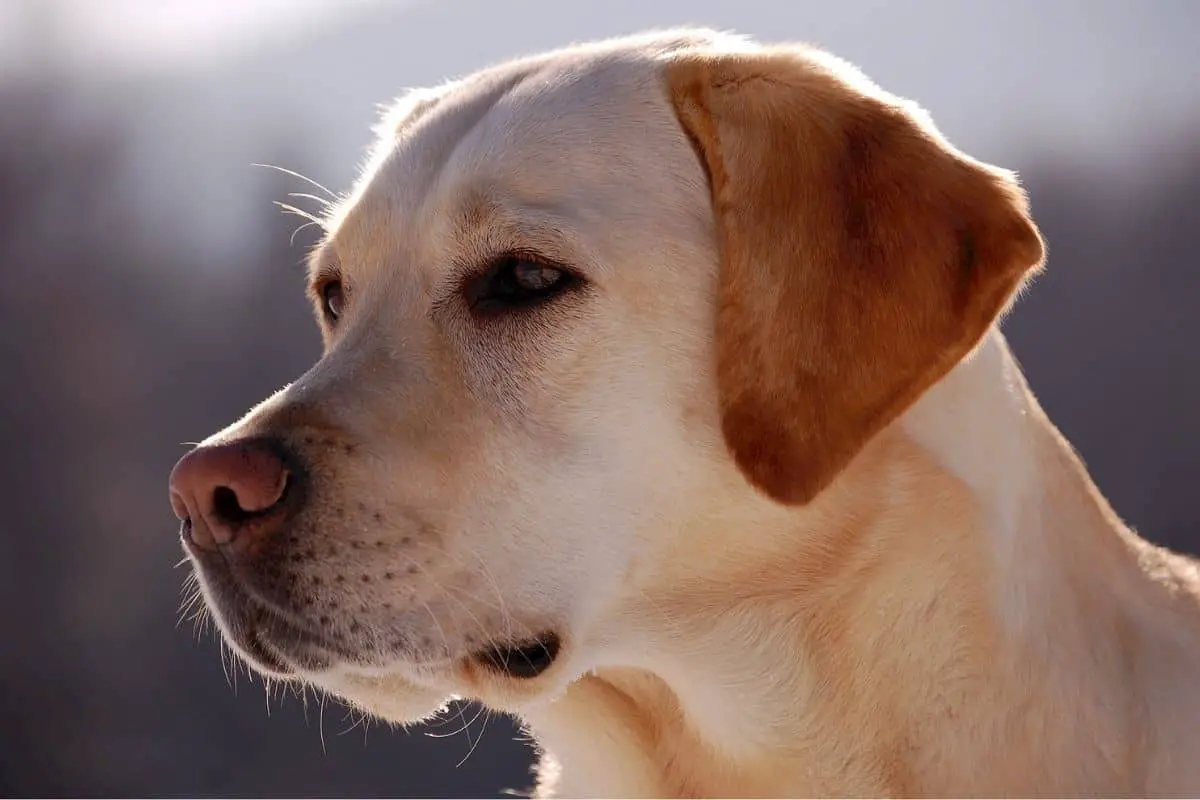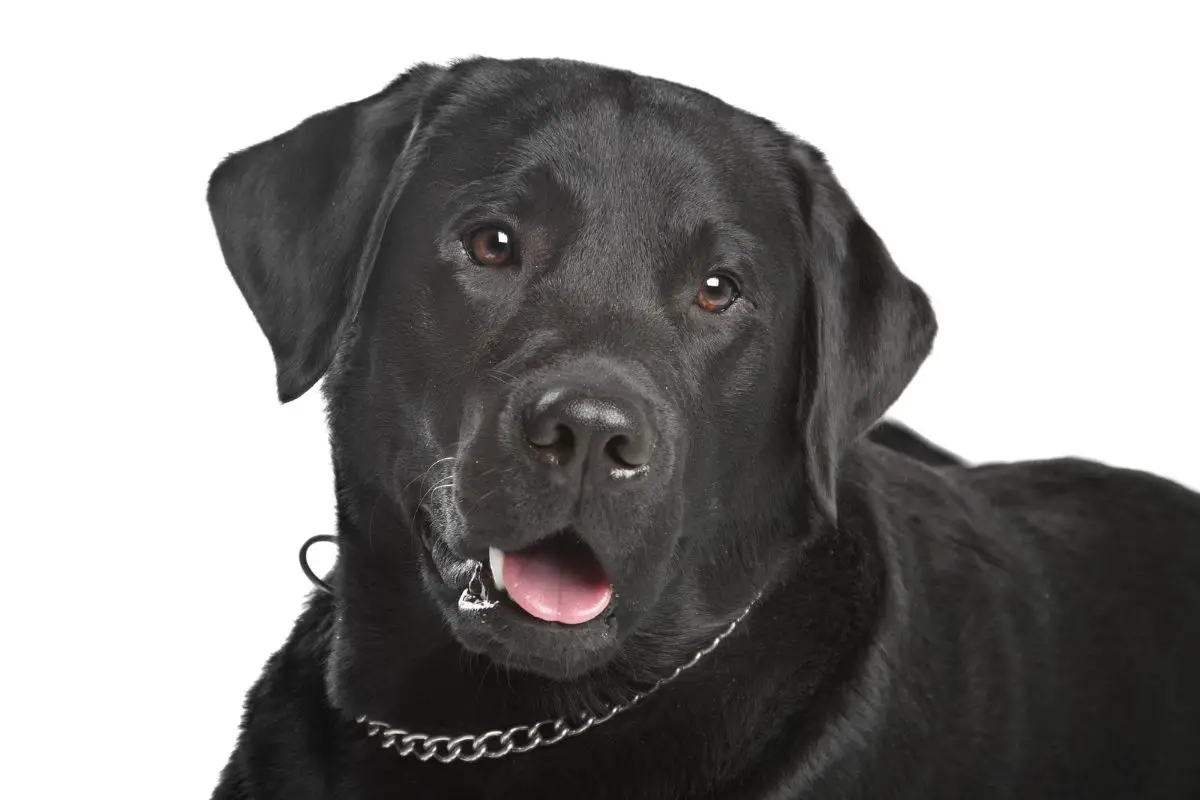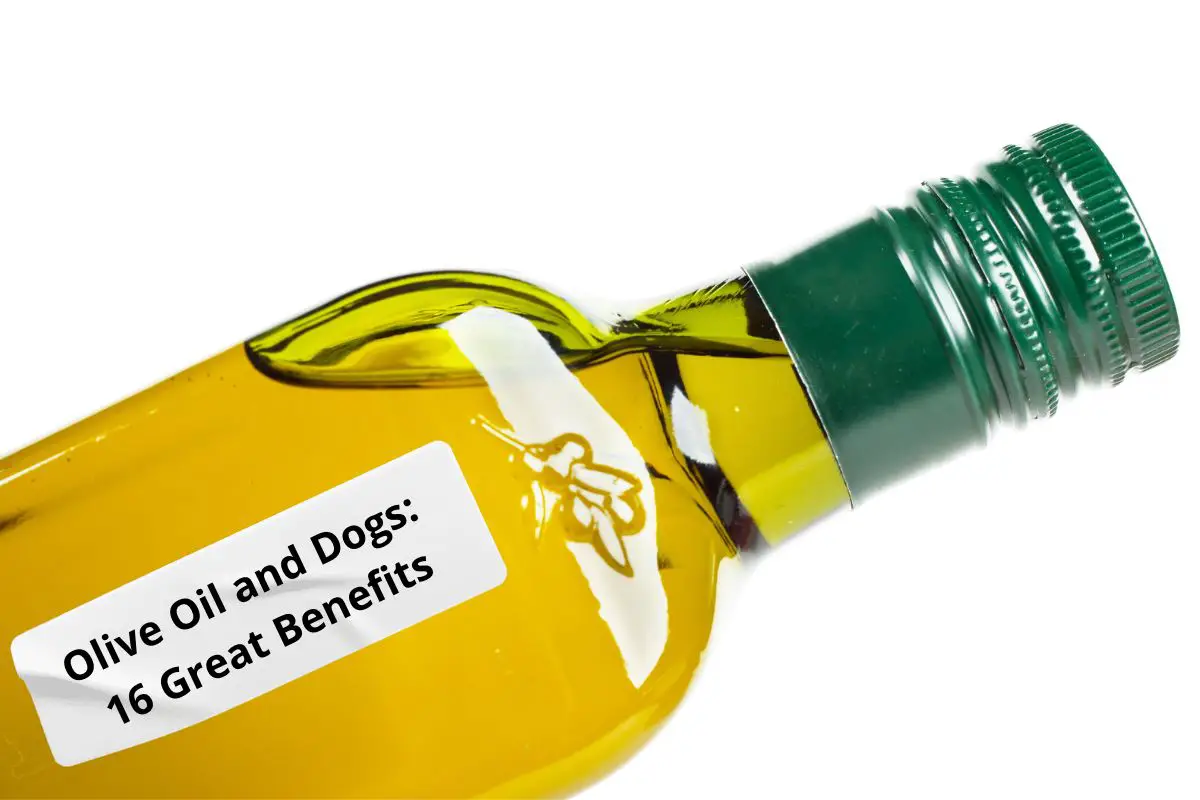This post contains affiliate links.
While many foods are beneficial and nutritious in your dog’s diet, other foods are bad for your labrador. Some are high in fat and sugar, where others contain toxic elements that can be harmful to your pet. So, what are the worst foods for labradors?
Foods that are bad for labradors include fatty or calorific foods, such as bacon. Since labradors can easily become obese, try to avoid foods that have high-fat contents. Other foods not recommended include chocolate, grapes, and caffeine, all of which are toxic to dogs and should be avoided.
This article will discuss what foods are considered bad for your labrador and what alternatives you can try instead. Remember always to introduce new foods in small amounts and monitor your dog for signs of adverse reactions.
Table of Contents
Feeding Your Dog
As responsible dog owners, it’s essential to have a clear grasp of the foods that aren’t safe for our pets. This can vary significantly between breeds, and research is required to be sure you have the correct information for your specific dog. If you are unsure of what you can and can’t feed your dog, always consult with your vet before introducing new foods into your dogs’ diet.
Labrador Diets
Labradors are not picky eaters and run the risk of becoming obese if you do not monitor their food consumption. There is little a labrador will not eat or chew on, and as the owner, it is your job to limit their access to all foods, human and their own.
Although many human foods are perfectly safe for your dog to eat, our food often has too many calories. Dogs have a sensitive digestive system, and though feeding them table scraps may seem harmless, human food is usually too rich for them to digest properly. Human food is also much higher in sodium than dog food, which the canine diet does not need!
Where some foods are toxic to dogs even in small amounts, such as onions, and grapes, the main reason not to feed your dog table scraps is that they run the risk of becoming overweight. Labradors have a history of becoming obese due to overfeeding, and though one bite may not seem like a lot, it is often the equivalent of much more than you think.
For example, one ounce of cheese to a medium-sized dog is the equivalent of 1.5 cheeseburgers to us.
When considering feeding your dog human food, for example, when looking into a raw food diet, always research each ingredient thoroughly. One breed may consume oats, but another may be sensitive to gluten and struggle to digest them.
Some foods that are safe to include in your labrador’s diets include:
- Carrots
- Cooked salmon (boneless)
- Blueberries
- Popcorn (unflavored)
- Watermelon (seedless)
- Apples (seedless)
- Chicken
- Sweet potatoes
These foods can be given to your dog in small quantities, as treats, or as extras in their kibble. However, if you are looking to transition your dog to a raw food diet, be sure to do so slowly. Introduce these foods carefully and monitor your dog’s reactions to each new food. It should take about a week to transition your adult dog from dry food to a raw diet.
Foods That Are Bad For Labradors
Now you know some of the healthier food options for your labrador, let’s take a look at some of the foods you should be avoiding. Some of the worst foods that you can feed your labrador — and possible reasons why — include:
- Bread is difficult to digest.
- Cinnamon will irritate your dog’s mouth.
- Dairy can be challenging for some dogs to digest and should be kept minimal.
- Nutmeg contains myristicin, which is toxic to dogs.
- Green tomatoes contain solanine, which is poisonous to dogs.
- Blue cheeses have high levels of mold.
Most fast foods, which are typically considered bad for humans, are also terrible for your dogs. They contain high levels of fat and sodium and can cause anything from obesity to heart disease.
However, not all human foods are bad for dogs only because of their calorie contents. Below we will explore deeper some of the foods you should not be feeding your labrador.
Chocolate
The vast majority of dog owners are aware that chocolate is not a safe food for their dogs. However, many are unaware of why and of how much chocolate is dangerous for their pet. This lack of knowledge can cause dog owners to panic and rush to the vet if they notice their dog has eaten chocolate when in reality, it depends on the type of chocolate and the size of your dog.
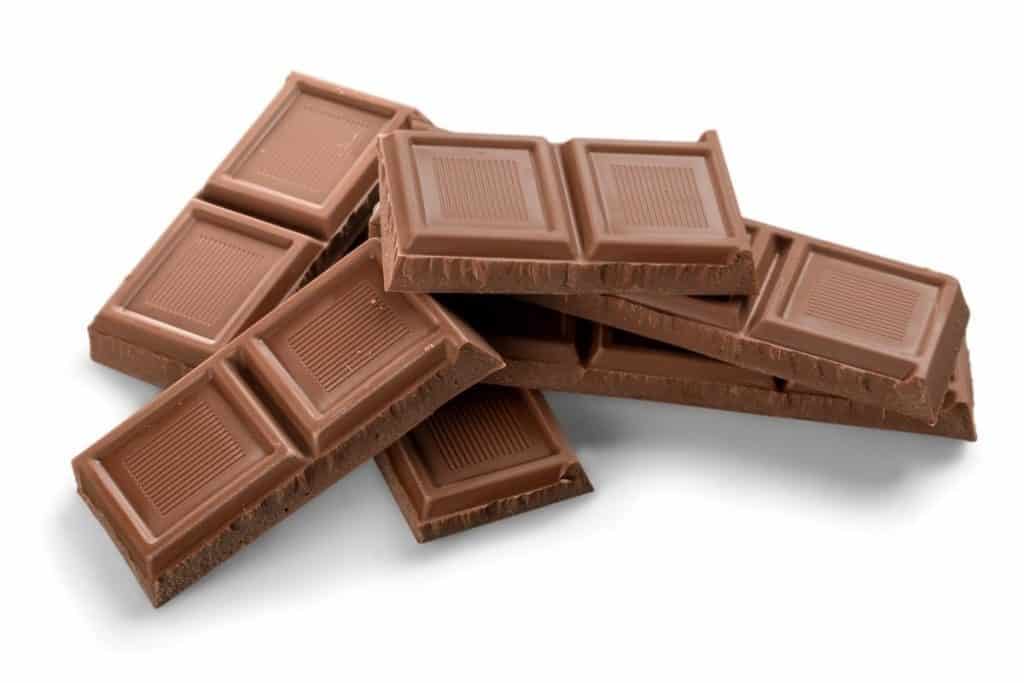
The reason chocolate is dangerous to dogs is the inclusion of one specific ingredient: theobromine. Theobromine is an alkaloid chemical found in the cocoa plant and is considered a stimulant. Found in higher ratios in cocoa powder, baking chocolate, and dark chocolate, this is highly toxic to dogs and can be fatal if your dog consumes too much.
Theobromine toxicity can affect the gut, heart, kidneys, central nervous system, and the signs of theobromine poisoning can occur anywhere from four to 24 hours after consumption. If your dog has ingested high levels of theobromine, you will likely see the following side effects and need to seek professional intervention:
- Vomiting
- Diarrhea
- Hyperactivity
- Restlessness
- Seizure
The good news is that not all chocolate bars contain high amounts of theobromine, and depending on the size of your dog, they may not display symptoms when ingesting small amounts. Of course, it is not recommended to feed your dog even small amounts of chocolate actively. But it is important to recognize when to go to the vet and when to monitor your dog.
The chart below shows the maximum amount of chocolate considered safe* for specific-sized dogs to eat. Anything more would be regarded as dangerous, and you should bring your pet to the vet immediately.
|
Maximum amount considered “safe” to consume |
Dark Chocolate |
Milk Chocolate |
|
Toy 3-4 kg (6.6-8.8 lbs) |
11 grams (0.39 oz) |
27 grams (0.95 oz) |
|
Small 6-8 kg (13.2-17.6 lbs) |
22 grams (0.78 oz) |
53 grams (1.87 oz) |
|
Medium 16-23 kg (35.3-50.7 lbs) |
57 grams (2.01 oz) |
140 grams (4.94 oz) |
|
Large 30-35 kg (66.1-77.2 lbs) |
109 grams (3.84 oz) |
261 grams (9.21 oz) |
|
Giant 57-89 kg (125.7-196.2 lbs) |
206 grams (7.27 oz) |
496 grams (17.50 oz) |
*This is not a definitive guide for every dog, and if your dog begins to show signs of theobromine poisoning, take them to the vet immediately.
A labrador is considered a large-breed dog, weighing between 24 kg and 36 kg when fully grown. If the average weight of a candy bar is 43 grams (1.52 oz), the typical labrador should be able to consume up to 6.5 milk chocolate bars or 2.5 bars of dark chocolate before you need to worry. Anything more is dangerous, and you should get them to the vet as soon as possible.
Chocolate Alternatives
Carob is a healthy chocolate substitute that is dog-safe, containing no theobromine at all. Made from carob beans, it looks and tastes very similar to chocolate. Carob is available in chip-form and can be used in homemade dog treats safely. Less sweet than chocolate, carob is loaded with vitamins A, B, & D and contains high calcium, iron, and magnesium levels. Always feed in moderation and provide in addition to a healthy diet.
Alcohol
Alcohol is something no dogs should be consuming ever because ethanol poisoning is possible even after drinking small amounts, resulting in:
- Vomiting
- Seizures
- Diarrhea
- Loss of energy
- Loss of coordination
If consumed in larger quantities, ethanol poisoning can be fatal to all-sized dogs. In our canine friends, alcohol consumption can come from drinking beer, wine, spirits, perfumes, cleaning products, and even mouthwash.

Alcohol can be especially dangerous to labradors when spilled on the floor, as labradors have a voracious appetite and will likely attempt to lick the liquid from the floor. Always be sure to clean up any spills right away and not leave open containers where your dog may gain access.
Alcohol Alternatives
If you are looking to feed your dog something other than water, either as a treat or when looking to increase their nutrient intake, bone broth is an excellent option. Though it should not replace water or act as a meal replacement, it can be a tasty, nutrient-packed alternative in small amounts. Several companies are selling “dog beers’ which can be bought in cans and typically contain some kind of broth. They have no alcohol.
Caffeine
Coffee and tea should never be on your labrador’s menu. That’s because too much caffeine can overwork your dog’s nervous system, leading to:
- Hyperactivity
- Elevated heart rates
- Abnormal heart rhythms
- Vomiting
- Lung failure
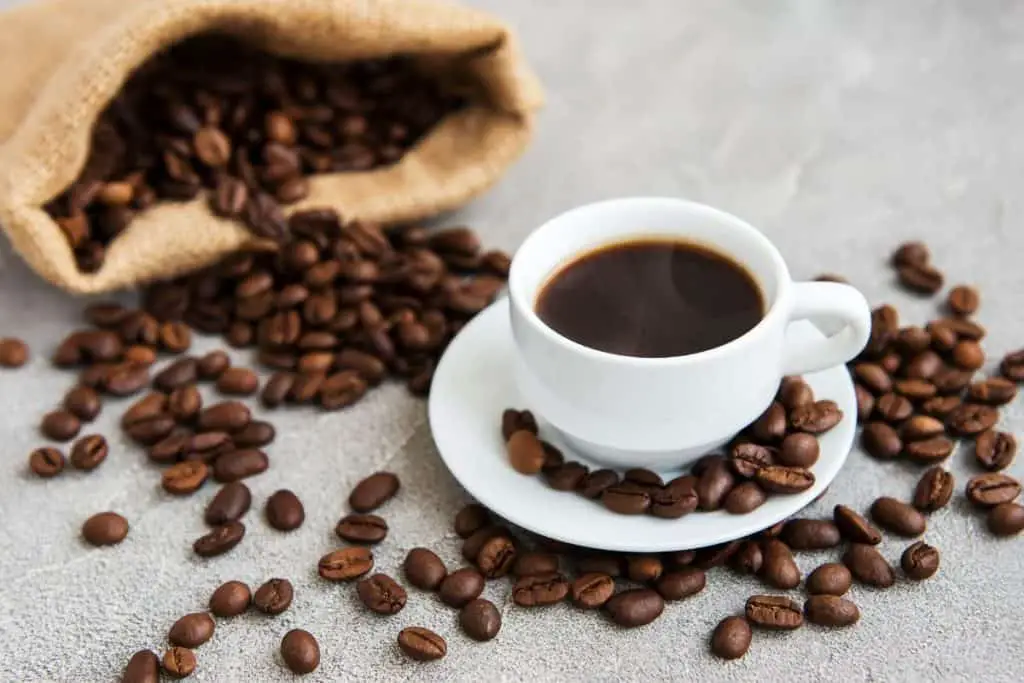
If consumed in high amounts, such as eating a bag of strong coffee beans, it can be fatal to your dog, and you should seek help from your vet as soon as possible.
Caffeine Alternatives
As humans, we often enjoy our morning coffee or tea and trips to coffee shops for expensive caffeine-filled drinks. In recent years, it has become popular to order puppuccinos for your dog. When purchased in the coffee shop, a cappuccino is typically an espresso-sized cup filled with whipped cream.
This should only be considered a treat and not given to your dog daily. Dogs with sensitivity to dairy products may be able to consume whipped coconut cream as an alternative.
Grapes and Raisins
Although experts are not entirely sure what substance in grapes is toxic to dogs, they are confident that feeding your dogs grapes or raisins is very dangerous. Consuming grapes or raisins can cause kidney failure and are especially hazardous to any dog with underlying health conditions.
Even a tiny amount of this substance is poisonous, though raisins are especially dangerous. Be very careful with feeding dogs any human foods containing raisins, such as cookies or bagels.
Always seek professional help if you think your dog has eaten even a small quantity of grapes or raisins. Some dogs may show no symptoms, but the dangers are still there.
Grape and Raisin Alternatives
You may think that grapes are a healthy fruit that is small enough to be used as treats for your labrador. If you are looking for something similar to a treat, raspberries, blueberries, and strawberries are an excellent, safe alternative. Start with a small amount when first feeding your dog, and only feed as treats occasionally.
Macadamia Nuts
Similar to grapes above, experts are unsure of what exactly in macadamia nuts is toxic to dogs. However, there is clear evidence of these nuts being very dangerous, even in small amounts. If your labrador has ingested macadamia nuts, you may see:
- A rise in body temperature
- Vomiting
- Inability to walk
- Muscle weakness
- Tremors
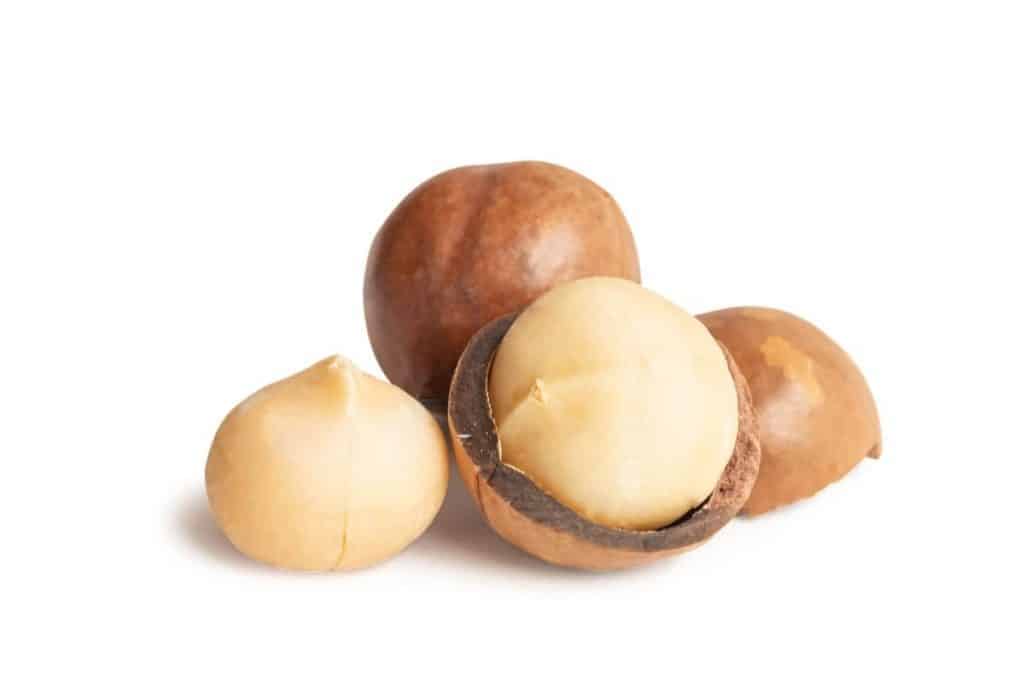
Though you may not purchase macadamia nuts specifically, they are common ingredients in other foods, such as granola, cereal, and energy bars. Always check your labels and keep such food out of your pet’s reach.
Macadamia Nut Alternatives
Plain peanuts are safe for consumption in minimal quantities. However, due to their high-fat content, they should only be given as high-value treats and never when roasted or salted. Though their shells are non-toxic to dogs, they are difficult to digest and should be removed before feeding to your dog.
Bones
Although raw bones are a popular choice for many dog owners, the risks far outweigh the benefits when it comes to your dog’s health. Bones can be a choking hazard, damage your dog’s teeth, and fragments can cause dangerous intestinal damage and obstructions.
Cooked bones should be firmly off-limits to your dog. Once cooked, the bones become brittle, and they pose a choking hazard should anything crack off. Chicken and fish bones — raw and cooked — are thin, fragile, and should not be fed to your labrador in either state.
The argument becomes confusing when looking into raw bones. On the one hand, raw bones are a good source of nutrients and can help satisfy your dog’s appetite without adding more food to their diet. The act of chewing on the bones stimulates saliva that can help with plaque build-up and gum disease. Also, having a bone to chew can help to prevent excessive chewing behaviors within the house.
However, many owners will feed their larger dogs larger bones, such as leg bones, which are thick and very dense. These bones can easily break your dog’s teeth if they chew too hard. Also, their rich nature, when overly consumed, can cause constipation in dogs.
If you choose to feed your dog bones, always ensure that they are raw. For larger breeds like the labrador, opt for thicker thigh bones that contain marrow. Continually monitor your dog when eating the bone and take the bone away after 15-20 minutes.
Bone Alternatives
Some great bone alternatives that promote dental health and help to prevent excessive chewing include:
- Horse, cattle, and pig hooves
- Edible dental chews
- Bully sticks
- Pigs Ears
Each of these has been proven effective and safe for dogs. Hooves are robust and withhold up to chewing from larger dogs while working to maintain gum health. Dental chews, bully sticks, and pig ears will soften as your dog chews and are naturally flavored to keep their interest for longer.
Avocado
Avocados contain a toxin called persin. Though it is primarily found in the skin, pit, and leaves of the tree, it is also present in the flesh in smaller quantities and is dangerous for your dog. Ingestion of too much persin can lead to:
- An accumulation of fluid on the lungs
- Breathing difficulties
- Oxygen deprivation
Experts do not know precisely how much of this toxin is dangerous to your dog, but it is best practice to avoid any food known to be poisonous to your pet. Similarly, avocados have a high-fat content that is not a healthy option for labradors prone to weight gain.
Avocado Alternatives
If you’re looking for a way to include healthy fats into your dog’s diet, nut butters are an excellent alternative. Natural, organic nutter butters (not macadamia) are full of nutrients that can benefit your dog’s diet. Incorporate a teaspoon mixed into your dog’s kibble or freeze and give to your dog as small treats.
Garlic and Onions
Garlic belongs in the same vegetable family as onions, which contain N-propyl disulfide. Many different types of onions include this toxin, such as shallots and leeks, but garlic has a far more potent amount and should never be in your labrador’s bowl.
N-propyl disulfide has been proven to restrict the flow of oxygen to the dog’s brain leading to damaged red blood cells and anemia. It is also known to cause stomach and gut irritation.
Garlic and Onion Alternatives
We use garlic and onions to add flavor to our food. Dogs differ significantly in their palates and do not require seasoning to enjoy their foods. However, if you are looking for a way to make your dog’s food more appealing (perhaps you have switched kibble brands, and your dog is not taking to it), you can sprinkle food toppers over your dog’s dinner to make it more appetizing.
Pineapple
Pineapple does not contain any toxins that are dangerous to your dog. They do, however, have high levels of sugar and calories, making them less than ideal for your obesity-prone labrador.
Though safe when fed in small quantities, it can lead to digestive issues if over-consumed. That’s because pineapple is relatively high in fiber and natural sugars, and you may find your dog has diarrhea when they overeat.
Pineapple Alternatives
Your dog does not think of food in the same way we do. They do not differentiate between sweet and savory and happily eat their meaty kibble with strawberries mixed in. That said, if you want to add fruits to your dog’s diet as a treat, strawberries are an excellent option.
Corn on the Cob
Corn is often a filler in many dog foods. Some dogs cannot digest corn and need a grain-free diet, where others can happily digest small amounts mixed into the daily feeding. Corn on the cob, however, is not advised as a treat due to the possibility of choking.
For labradors especially, it is very likely that they will bite off large chunks of the corn cob, which they cannot digest. Some signs that your dog has eaten a corn cob include:
- Vomiting
- Diarrhea
- Tiredness
- Constipation
- Loss of appetite
- Abdominal tenderness
If your labrador has swallowed a more significant chunk, there may be an intestinal blockage. If this is the case, you should report to the vet immediately. Depending on the size of the piece, they may need to remove it under anesthesia surgically.
Corn on the Cob Alternatives
Corn on the cob may seem like an excellent option to let your dog chew on, but given the way labradors chew their food, it will likely end up with breakage and digestive issues. Instead, let your dog chew on dental sticks or bully sticks that are softer and easier to digest.
Final Thoughts
When looking into foods that are bad for labradors, it is necessary to distinguish between unhealthy foods and foods that are dangerous. Some, like bacon, and processed nut butters, are safe for your dog to eat but contain high-calorie contents and are not advised for labradors as they can quickly become overweight.
Foods that are dangerous for your dog to consume include chocolate, garlic, onions, macadamia nuts, and grapes. Each of these contains toxic elements that are dangerous to your dog and can cause serious harm.
Sources
- My Food Data: Top 10 Chocolate Products Highest in Theobromine
- Fat Secret: Calories in a Hershey’s bar
- Beans n Bones: Carob
- Shop Beer Gear: Dog Beer
- Hillspet: Dogs and Table food
- Raw Bistro: BARF
- Healthline: Safe foods for dogs
- Me pet needs that: Best dog food toppers
Mrdogfood.com is a participant in the Amazon Services LLC Associates Program, an affiliate advertising program designed to provide a means for sites to earn advertising fees by advertising and linking to Amazon.com. We also participate in other affiliate programs which compensate us for referring traffic.

